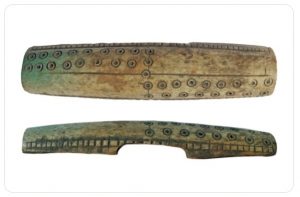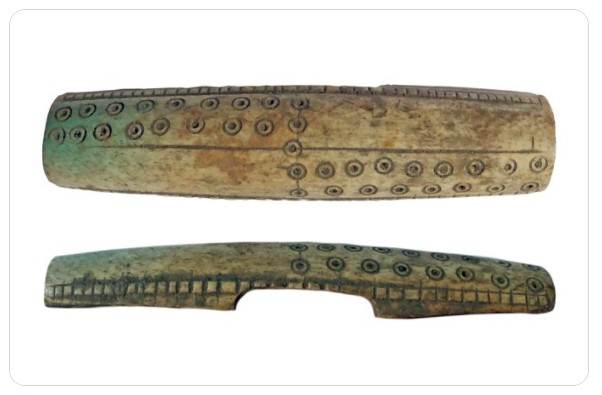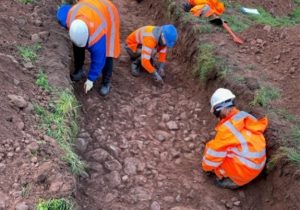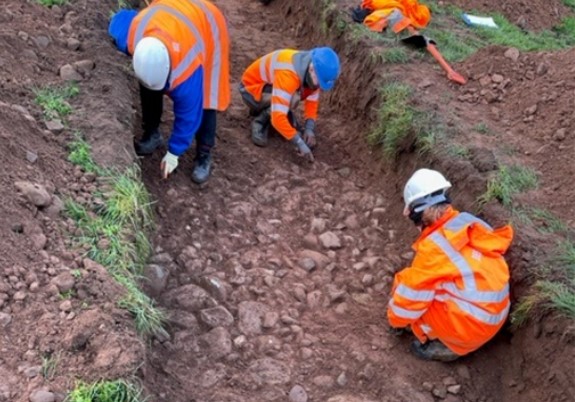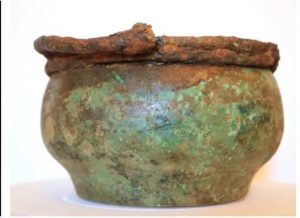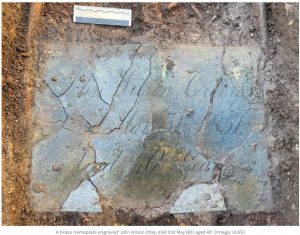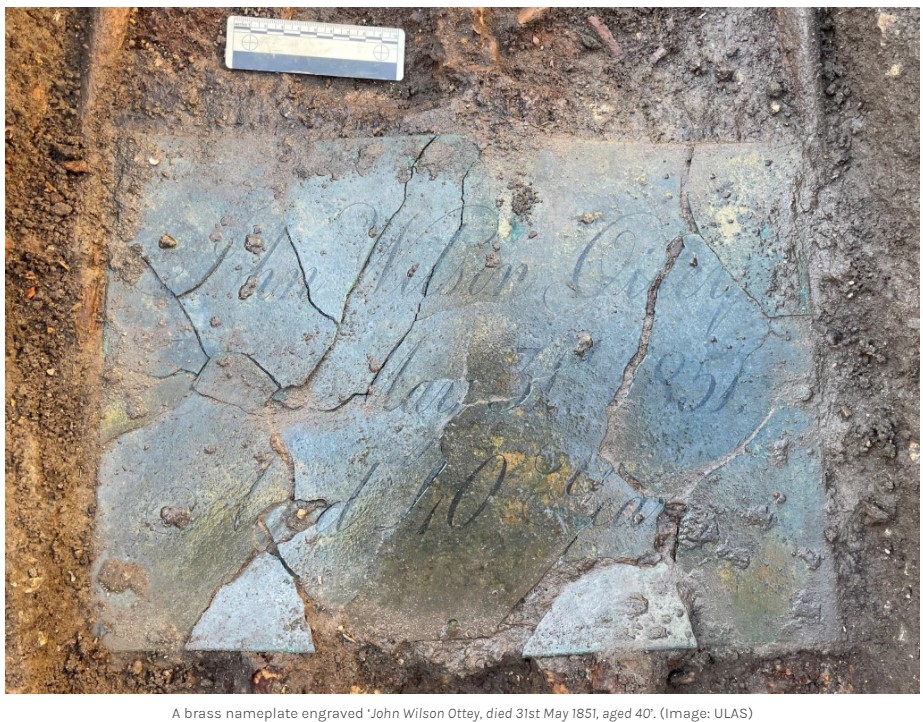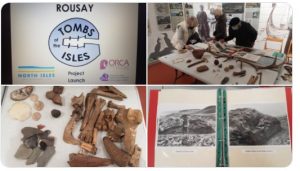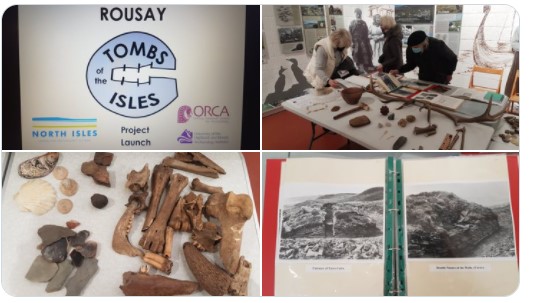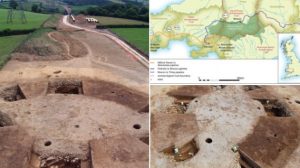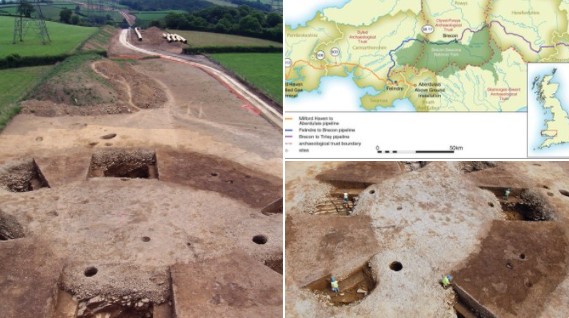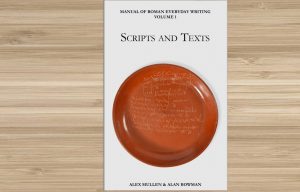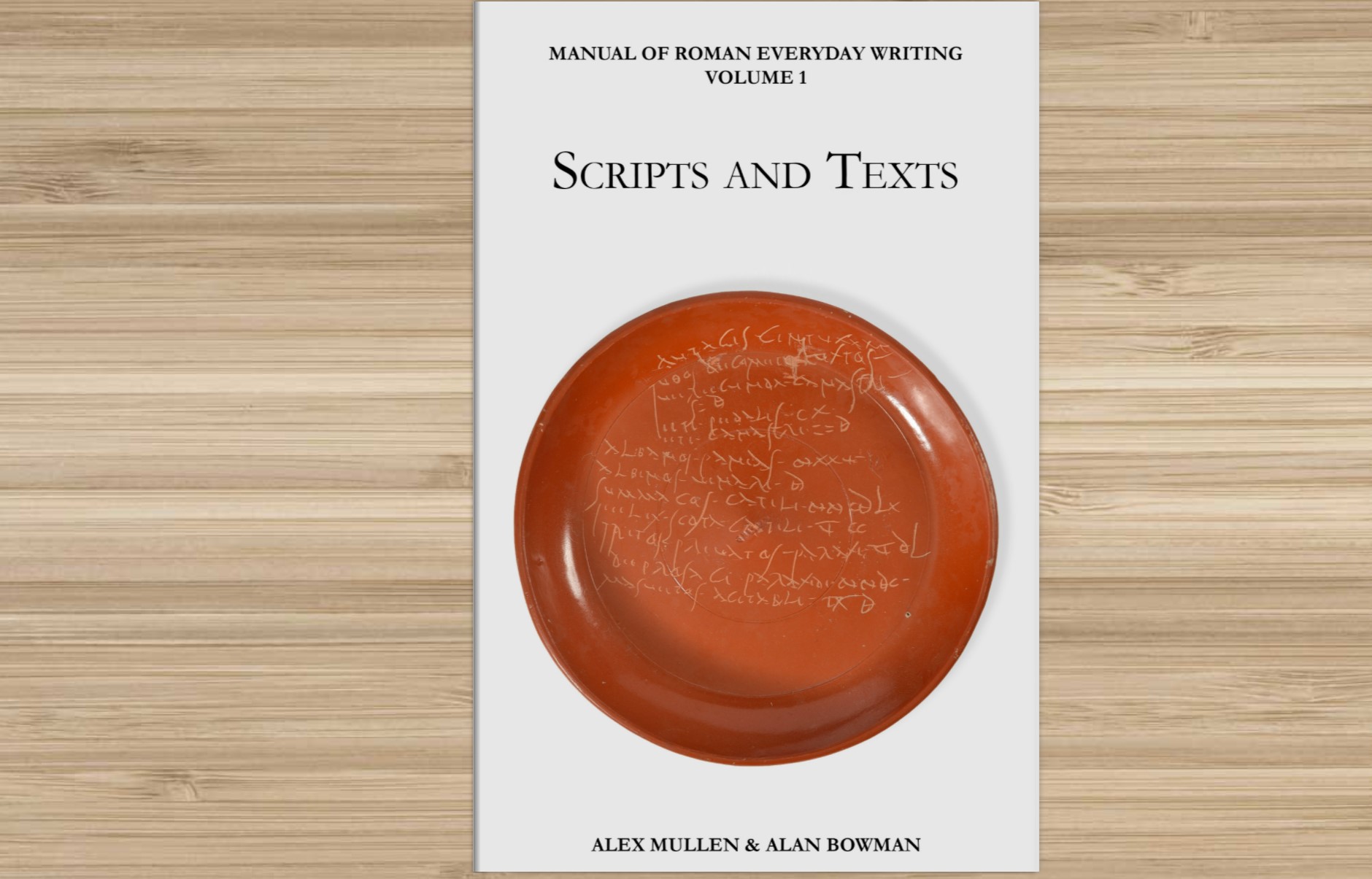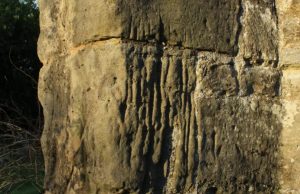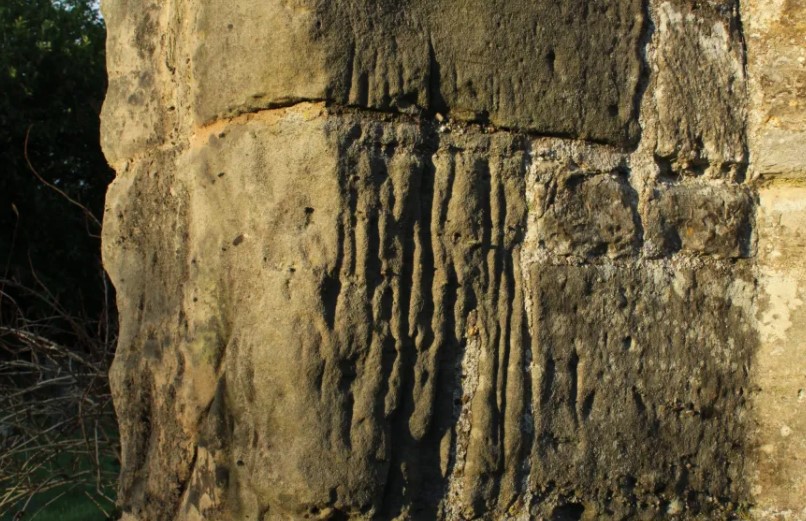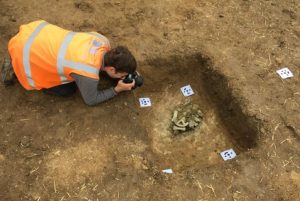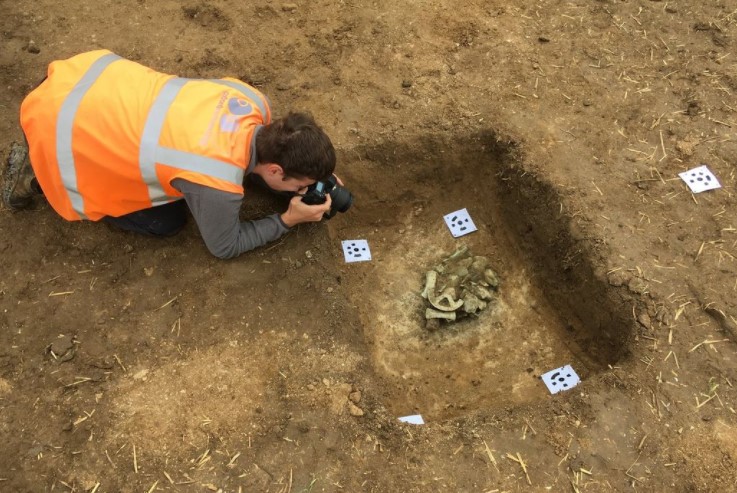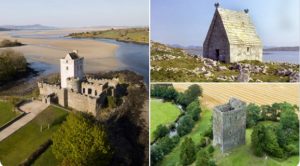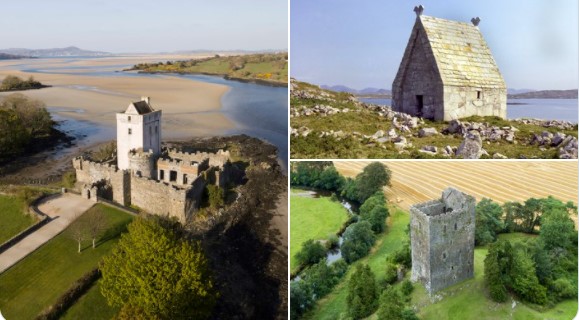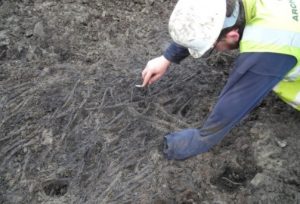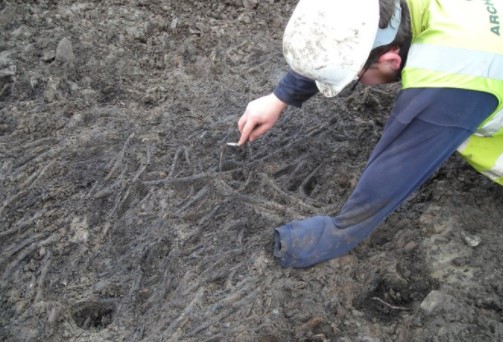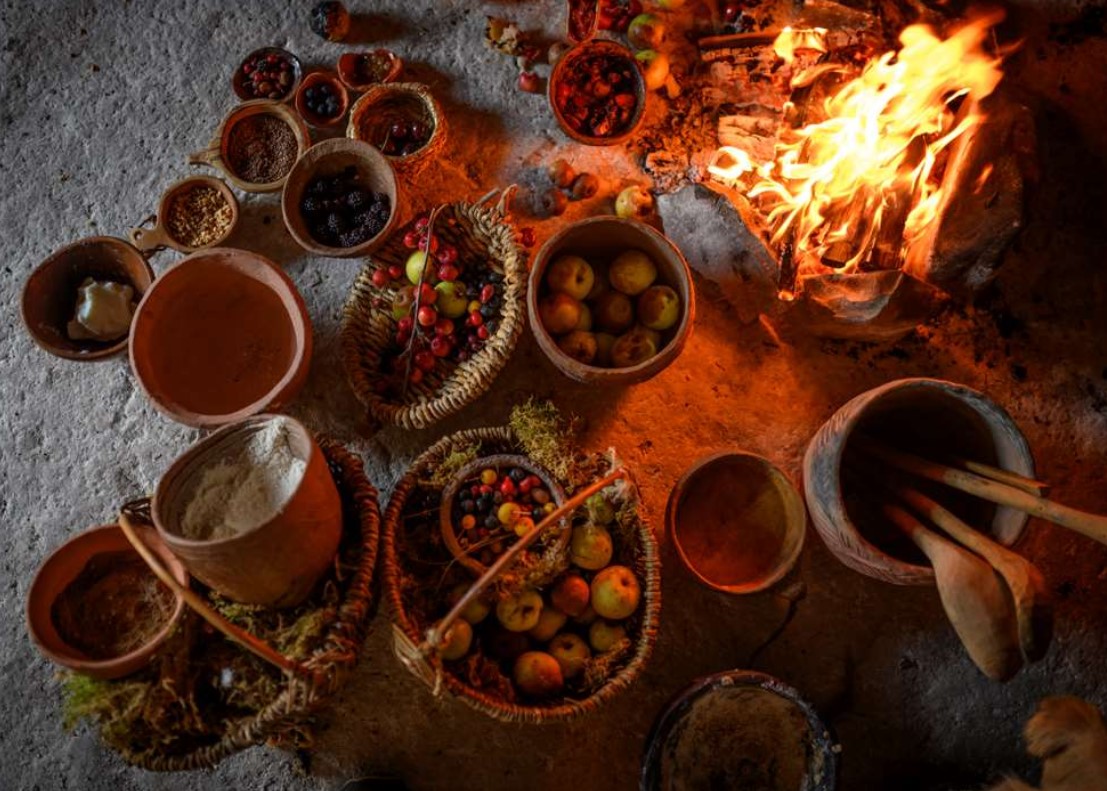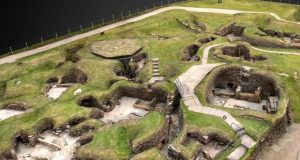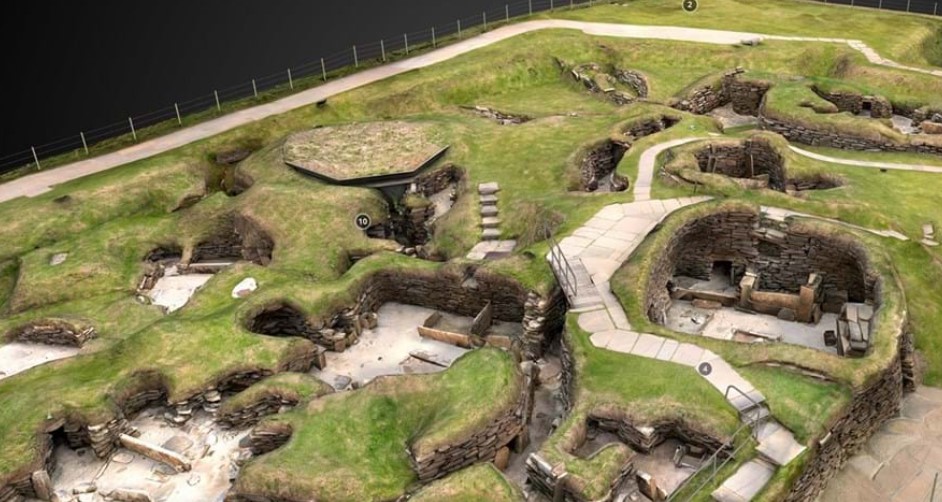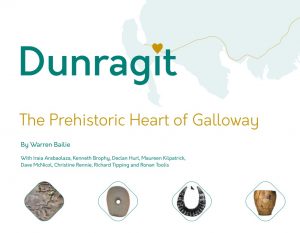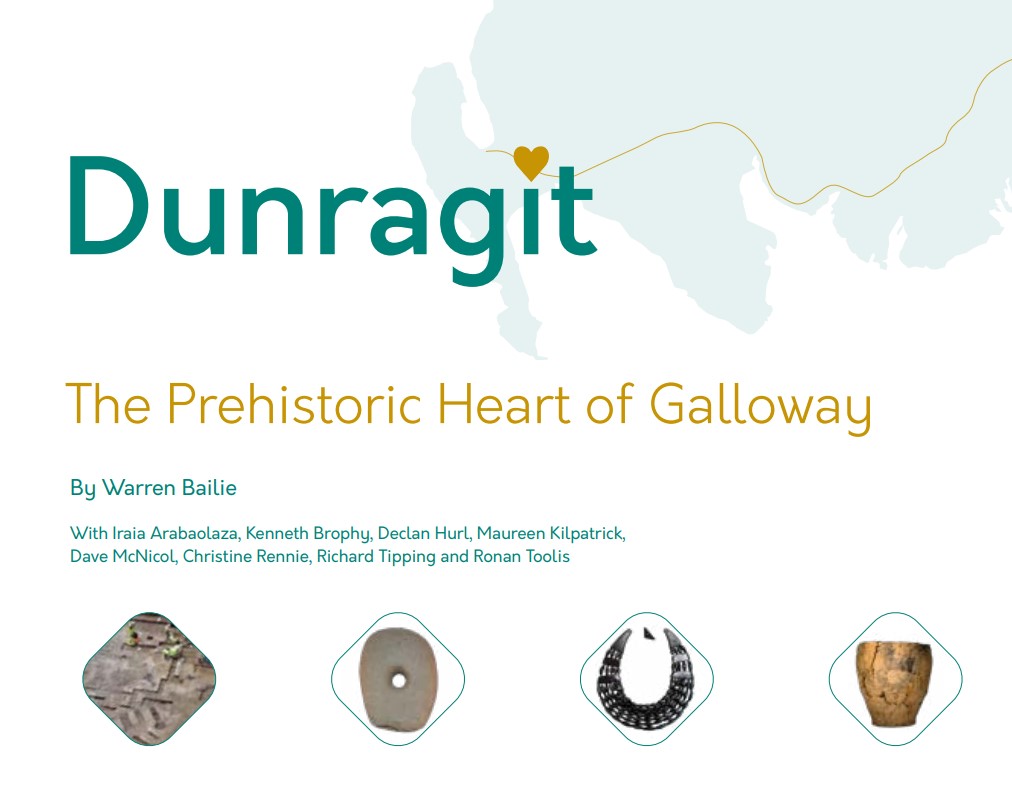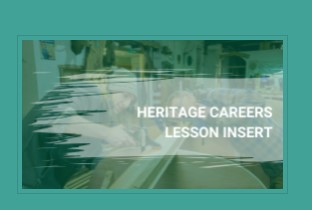News about archaeology and heritage in the UK
Week ending 5th December 2021
Bedale bone horse bridle toggle
This Iron Age bone toggle from a PCA excavation in 2015 is probably part of a horse bridle with a beautiful dot, ring and incised line decoration. The surface is worn smooth from repeated use, presumably rubbing against the cheek of the horse. It is these little things that make such a connection with the past.
It came from the Bedale enclosure in North Yorkshire, excavated by PCA Archaeologists ahead of the Bedale, Aiskew and Leeming Bar Bypass in 2015. The fully illustrated booklet featuring this site, and a Roman villa at Aiskew, is available as a free download on the PCA website.
Read the booklet here: Before Bedale – Pre Construct Archaeology (pre-construct.com)
Evaluations on A66 trans Pennine route
A team of more than 40 archaeologists from Wardell-Armstrong is working on sites along the A66 hoping to understand more about the route’s rich Roman history.
Since the start of November, they have been making their way through over 1,250 trial trenches as part of extensive surveys which are being carried out to analyse the archaeology along this Northern trans-Pennine stretch.
National Highways project director Lee Hillyard said: “A good, early understanding of the unique relationship between our project and the surrounding historical environment will help us avoid any unexpected surprises and unnecessary delays once construction begins.”
Roman vessel reveals contents
An update on the Roman bronze vessel PCA Archaeologists found earlier this year from an excavation in Cambridge, during which they identified the course of Roman Akeman Street.
The vessel underwent conservation and was x-rayed prior to micro-excavation, to make sure that no delicate elements were damaged while the contents were excavated, and so we had an idea whether there might be a coin hoard or other metalwork inside from the outset.
– Perhaps an early example of “I’ll do the washing up tomorrow!”
Lucy Cavendish College Update – Pre Construct Archaeology (pre-construct.com)
Leicester Cathedral Revealed – John Wilson Ottey (1810-1851)
Excavations at Leicester Cathedral by ULAS, Mathew Morris tells us more about the first burial the archaeological team have identified by name.
Putting names to the dead when they are skeletal remains is very difficult. The burials excavated so far are all late 18th and early 19th century in date, but even though they only died 150-250 years ago most will remain nameless. This is because the information we can gather from each skeleton – age, sex, stature, ancestry, diet, period of death etc. – is too broad to identify specific individuals. Even DNA analysis, if carried out, won’t identify people by name, especially if they have no known relatives alive today and have multiple family members buried in the same cemetery. But now.. a readable name plate. A life is revealed
Read the story here: Leicester Cathedral Revealed – John Wilson Ottey (1810-1851) – ULAS News
‘Tombs of the Isles’ project relaunch
UHI Archaeology Institute have launched the Tombs of the Isles project in Rousay – home of the Neolithic tomb! They are looking forward to creating tomb archives, recording & 3D models with islanders over the next year. This is a project to celebrate, research and share the stories of the Neolithic chambered tombs in Orkney’s North Isles
Led by the Orkney Research Centre for Archaeology (ORCA), part of the University of the Highlands and Islands Archaeology Institute, Tombs of the Isles was commissioned by the North Isles Landscape Partnership Scheme (NILPS) in early 2020, but had to be postponed due to the pandemic.
Now being relaunched, the project will see a programme of research, walks, arts workshops, archaeological fieldwork (survey, geophysics, excavation) and school workshops explore some of the most iconic tombs in the North Isles of Orkney and bring the lesser known sites into the spotlight.
Learn More: Tombs of the Isles – Archaeology Orkney
Carmarthenshire’s missing monument
The installation of the South Wales Gas Pipeline allowed archaeologists from Cotswold Archaeology to investigate a 317km corridor stretching from the Pembrokeshire Coast to Gloucestershire. Their finds have illuminated more than 10,000 years of human history, including the previously unknown remains of Britain’s most south-westerly Neolithic henge. Together, their endeavours have revealed a vivid slice of human life spanning more than 10,000 years, from the Mesolithic period to the dawn of industrialisation. Post-excavation analysis – funded by National Grid – is now complete, and Cotswold Archaeology has published a comprehensive synthesis of the archaeological findings, Timeline: the archaeology of the South Wales Gas Pipeline
Read the Current Archaeology Report here:
Carmarthenshire’s missing monument: how one of the biggest excavations in Wales uncovered a long-lost henge | The Past (the-past.com)
Give the GIFt of Heritage
This year, Wessex Archaeology are encouraging everyone to bring the past to life and give the GIFt of heritage! Using the free digital resources on Flickr, the challenge is to use any images or videos you like to create an interesting, creative, entertaining, or just downright mad GIF to share on social media. Find the Wessex GIPHY account here for inspiration!
To kick things off this week, they have put together a handy guide to get you started with making a GIF using one of Wessex Archaeology’s free photos on Flickr. This method offers a simple way of boosting images with animated effects and stickers – and to do this they used GIPHY. GIPHY is a free platform that allows you to create, upload and share GIFs. ( may even count as CPD!)
Give the GIFt of Heritage Week 1: Making your first GIF from a photo | Wessex Archaeology
Manual of Roman Everyday Writing, Volume I : Scripts and Texts
The first volume of the open access Manual of Roman Everyday Writing. Vol. 1 Scripts and Texts from the LatinNow project, hosted by the Centre for the Study of Ancient Documents (CSAD), has been released online. It can be viewed here: http://bit.ly/MREW1 you can also download a pdf here: Publications (latinnow.eu).
Volume 1 describes the kinds of documents that are written in Latin cursive script and tabulates the main published collections and individual items of texts in cursive script from across the Roman world, ranging in provenance from northern England to Africa, Egypt and Syria. The types of cursive script, conventionally labelled Old Roman Cursive (1st-3rd centuries) and New Roman Cursive (from the 3rd century) are illustrated, with layout of different kinds of documents, tables of letter forms and the most important abbreviations, signs and conventions. For the modern reader, it provides a step-by-step guide to deciphering and interpreting Roman cursive texts, including video tutorials. Finally, it offers an exploration through text and video of the technologies of the digital age, including multispectral analysis and Reflectance Transformation Imaging, which have been pioneered at the Centre for the Study of Ancient Documents since the 1990s and have greatly improved the image-capturing techniques and the visibility of damaged documents written on wood, papyrus and various metals.
Mediaeval Mythbusting : Arrow Stones
When visiting English and Welsh parish churches there are a number of commonly repeated stories which fall into the category of received wisdom. Such tales are believed so profoundly that they are rarely ever questioned.
One such story is that there are shallow grooves cut into stones which were created by mediaeval archers, honing their arrows, during practice sessions prior to fighting in the Hundred Years War.
Learn the truth from James Wright at Triskele Heritage. Mediaeval Mythbusting Arrow Stones – Triskele Heritage (triskelepublishing.com)
Oxford Archaeology assists excavation of two Bronze Age hoards
Read the full story here: Oxford Archaeology assists excavation of two Bronze Age hoards
Revised General Scheme for the Monuments and Archaeological Heritage Bill Approved by Irish Cabinet
This could be HUGE for Irish archaeology, a new Monuments and Archaeological Heritage Bill. This week Cabinet approved the Revised General Scheme of the Monuments and Archaeological Heritage Bill. It will repeal, replace and modernise the current Monument laws, some of which go back to the 19th Century
The Revised General Scheme of Monuments and Archaeological Heritage Bill contains a range of proposals that seek to streamline and simplify existing systems and processes, and provides for the State to ratify some key international conventions in the area of heritage protection, should the Government decide to do so. There are also proposals for innovative measures, such as the automatic legal protection for finds of archaeological sites, a system of civil enforcement to be used as an alternative to, or to supplement criminal proceedings, and an appeal process for license applications.
More info and links here gov.ie – Revised General Scheme for the Monuments and Archaeological Heritage Bill Approved by Cabinet (www.gov.ie)
Dere Street Roman Road at Dun Law, Scottish Borders
Excavations along Dere Street Roman road at Dun Law Wind Farm by CFA Archaeologists back in 2014. The road used a base of logs and branches to cross a wet area and showed that Agricola’s army used ingenious solutions to cross difficult terrain.
Those Romans!
Full report on SAIR: Vol 57 (2014): Excavation across the Dere Street Roman Road at Dun Law, Scottish Borders | Scottish Archaeological Internet Reports (socantscot.org)
Neolithic-inspired mince pies (makes 6)
Builders of Stonehenge enjoyed seasonal food containing foraged fruit and nuts, English Heritage has revealed today as the charity announced it will be selling Neolithic-style mince pies at Stonehenge from this weekend. The charity has also shared its reimagined Neolithic Mince Pie recipe for people to cook themselves at home, while English Heritage Volunteers will be cooking up the Neolithic-inspired mince pies every Monday at the prehistoric site.
Ingredients:
For the pastry:
2 x handfuls of emmer flour
½ handful of hazelnut flour
Knob of lard
A few drops of water
For the filling:
Four crab apples or small sour apples
A few blackberries
A few sloes
Pureed rose hips (about a spoonful)
A spoonful of honey
A handful of whole berries
A couple of crushed hazelnuts
For the decoration:
Some linseeds and a drizzle of honey for the tops
Method:
1. Preheat your oven to 210C electric /190C fan/gas mark 5. Cut up your compote filling ingredients and put them in a saucepan on a medium heat, stew until tender.
2. Mix the flours with the lard and a few drops of water until you have a firm dough.
3. Create six circles for the pie bottoms, and six slightly smaller circles for the tops. Place the bases into cases in a muffin tin and spoon in cooked compote.
4. Take lids and brush one side with water and place water-side down, pressing the edges to seal.
5. Once all of the lids are on, brush their tops with water and sprinkle with honey, linseeds and crushed hazelnuts.
6. Bake for 20 minutes or until golden brown and firm to the touch.
New digital model of Skara Brae
Fancy exploring a Neolithic village? Historic Environment Scotland‘s new digital model of Skara Brae lets virtual visitors step inside this iconic World Heritage site on #Orkney. It also highlights the impacts of climate change on the 5,000-year-old village.
The 3D scan shows how HES is investigating climate change impacts at the World Heritage site in Orkney.
New digital model of Skara Brae | Historic Environment Scotland
Dunragit Publications – Monograph and booklet online
Prior to the construction of the A75 Bypass around the village of Dunragit in Dumfries and Galloway, archaeological investigations were undertaken in 2012-2014 by GUARD Archaeology on behalf of Transport Scotland. The results were spectacular, revealing major archaeological findings that extensively expand upon previous investigations of the Neolithic ceremonial complex to the south of the village. This new exploration revealed an ancient landscape containing a long and rich record of the prehistoric peoples that lived and died in this part of south-west Scotland.
From the earliest Mesolithic house in south-west Scotland to a Neolithic timber alignment linked to the ceremonial complex, from two Bronze Age cemeteries to an Iron Age village, the number of archaeological sites uncovered during the work highlights the importance of Dunragit as a prehistoric heartland for eight millennia.
The results are freely available, in a detailed monograph and also in a booklet for the general and younger reader.
READ more HERE: GUARD Archaeology Limited – Dunragit Publications
DISCOVER! CULTURAL HERITAGE CAREERS
Discover! Creative Careers inspires and informs young people interested in gaining an insight into the roles that exist within the UK’s Creative and Cultural Industries. It helps young people and their teachers, parents/carers discover the range of jobs and entry routes.
Half way down are links to tools developed by Historic Environment Scotland and other heritage sector organisations (including CIfA) to support careers education. This includes careers films, a lesson plan and links to further information.
The resources demonstrate the breadth of roles available including:
recorded conversations based around unique roles, entry routes and exploring how these industries are impacting on climate change; profiles from individuals exploring their specialist roles and their journeys to get where they are today; tools, lesson inserts and plans; additional resources from key partners
DISCOVER MORE: Discover! Creative Careers (dyw.scot)


